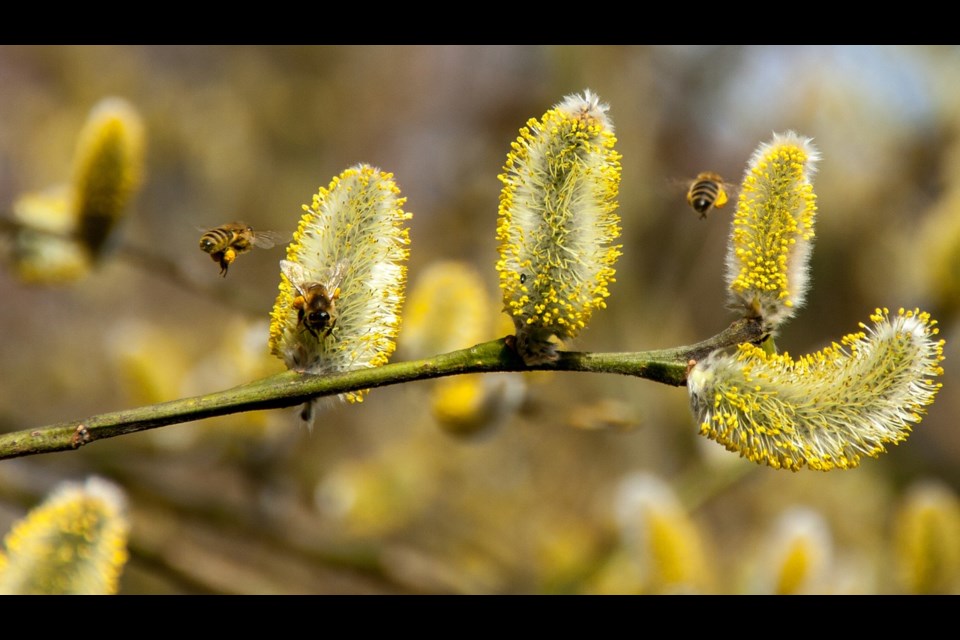Last week, we introduced some of the basic guidelines for creating a pollinator garden in your outdoor space. Pollinators are vital to our food sources and due to many factors, including loss of habitat, pollinator populations have experienced severe declines in recent years. It is important to choose a spot for your pollinator garden that has some sunshine as during spring and fall, these sunny areas warm more quickly so that the pollinators can make the most of every day.
Once your soil is amended and ready to go it is time to plant. Native plants are essential to a successful pollinator garden. Go for a walk outside of urban areas and see what is growing. Early in spring, it is the pussy willows and then yes, the dandelions that show colour on the prairies. Wild flax, sage, fireweed, roses, monarda, goldenrod, Queen Ann’s Lace, and dogwood are just some of the native plants you could include in your pollinator garden. As far as other things to plant include any of the fruiting trees and shrubs, flowering herbs, and vegetables, lilacs, monarda, delphinium, fuschia, nicotiana, Joe Pye weed, columbine and some self-seeders like calendula, cosmos, forget-me-nots and sunflowers. If self-seeding annuals are of interest, watch for next week’s column that will be devoted to them. Do not forget about the night pollinators, moths and bats and plant some luminous white flowers like evening scented stocks, nicotiana, and the scented mock orange shrub.
It is important to supply some water sources in your pollinator garden. While your new plants are getting established, water regularly to ensure the formation of strong root systems that will withstand the hot summer weather. For the tiny critters, shallow bowls with some rocks sitting in the water allow them to safely hydrate without falling into deeper water and drowning.
Shade and shelter from the wind is also important. One of my favourite things to do in my pollinator garden is to quietly watch the hummingbirds flit madly about and then rest in the shade during the hottest part of the day. Some evergreen trees or shrubs will help to give shelter from the prevailing NW winds and create warmer microclimates in your garden.
The sky’s the limit as to what you create in your pollinator garden. There are endless pollinator plants that come in many different colours and shapes so choose some of what you find most attractive. This will help you to pause and watch nature at its finest. Mix various heights, textures and shades in the garden. Mother Nature can blend all colours, tints and shades with no worries about clashing colour schemes.
Once your garden is established the maintenance just gets easier. Self-sowing plants move around and grow where they choose. If their choice is not to your liking a few swipes with a hoe in spring will keep them where you would like them to grow. The sunny spots will evolve as well so you may decide to prune back some of your woody plants to open up the area again to the sun once a few years have passed.
Planting a pollinator garden is a lovely way to enhance your landscape and the surrounding environment. It also gives you and your neighbours lots of lovely things to enjoy and you never know – you might be starting a new trend!
Hanbidge is the Lead Horticulturist with Orchid Horticulture. Find us at ; by email at [email protected]; on Facebook @orchidhort and Instagram at #orchidhort.
Tune into GROW Live on our Facebook page or check out the Youtube channel GROW




